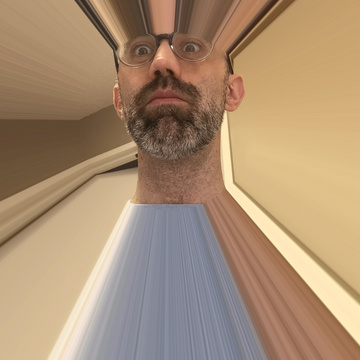It has been well documented how transphobes use biology (incorrectly, by the way) to account for there only being two sexes. There are actually many more than two chromosomal variants of sex. In order to attack the idea that you can be born in the wrong body (which they may view as a slight against the putative omnipotence of their god), they erase the practice of doctors literally choosing to assign a sex (happens frequently), and the existence of intersex people. Although this is an egregious thing in itself, there are many eloquent people writing and speaking on this. However, one of the ideological uses of biology has emerged in the discourse of ecology, and this is something I rarely hear discussed or critiqued. The idea of "invasive species" has emerged in the last half century to describe species that move beyond their range and "take over." Such plants as kudzu, purple loosestrife, and animals such as zebra mussels, asian carp, and burmese pythons have all been demonized as ecologically destructive, or disrupting existing ecological relationships.
There is no basis in biological theory, however, for the idea of invasive species. The overarching theory in biology, analogous to plate tectonics for geology, is evolution. It maintains that species pass down inherited adaptations to their environment. Sometimes, adapting to a current environment includes moving away from it, whether purposely or not. Coconuts float, and they are known to colonize islands long beyond their original range. If the idea of invasive species cannot be found anywhere in the overarching theory of biology, then it is not a biological idea. It's a political idea, and the political idea it is most clearly related to is fascism. Biology should take no stands on what belongs where because that is not what concerns it. Species have always moved in various ways, looking for new opportunities to survive and thrive. Homo sapiens sapiens is no exception.
While it is true that a species can do so well in a new environment, it makes survival harder for other organisms already in that ecosystem, most species can and do adapt to the new situation. It's been happening for billions of years. Ecology developed as a branch of biology, however, in its recent concern about invasive species, it has become much more useful for the political ideology of fascism than to biology. Part of fascism's modus operandi is the identification and demonization of external and internal enemies of the nation. Its aggression towards ethnic minorities as "not belonging" to the nation is well-known. It identifies scapegoats, people that are easy to blame economic troubles on (fascism tends to arise during periods of economic downturn) because they are different. Gay people, not like "us." Jews: not like "us." You get the picture. By saying a species does not belong somewhere, people are making a non-scientific judgment. There is nothing scientific about the idea of invasive species. It does not describe reality in an objective, neutral way. It makes a moral judgment.
Let's take a recent example of an invasive species moral panic: burmese pythons in Florida. A young man named Garrett got famous on Instagram for his handling of species feared such as venomous snakes, spiders, etc. He decided his mission was to "yoink" (his colorful word for capturing) a 20 foot burmese python in Florida. All the specimens he collects (of burmese pythons at least), I assume he kills, seeing as he seems to buy into this idea of invasive species. All the people worried about "invasive species" talk about how the populations of native wildlife decline because the population of burmese pythons has grown so fast. They even cite studies sometimes, although the studies they cite often don't even support their own points or arguments. I read one of the studies they cited, and it showed that burmese pythons do indeed impact the populations of animals like skunks, raccoons, and rabbits. Any person in North America could tell you that these populations are plentiful and for the most part healthy. If their populations decline a little in a small corner of their range, what's the big deal? Burmese pythons are cold-blooded. They don't need to eat often. In fact, they can survive for almost a year without eating if they have a big meal such as a white-tailed deer. That kind of predation is hardly a concern for local animal populations. What, then is behind this policy-supported mission to get rid of burmese pythons in Florida, when it can clearly support a population of them there without too much harm?
It's a moral idea. People don't like snakes. They are afraid of them. They are a symbol of evil in Judaism, Christianity, and Islam, the dominant religions of the area. I would argue on the other hand that in these days of ecological crisis, snakes should be considered role models of ecological citizenship, rather than demonized. They consume so little compared to birds or mammals. The idea of "invasive species" dovetails too nicely with the idea of immigrants. The moral panics over invasive species have been a not-so-benign wellspring of the resurgence of popularity of fascist ideology.





